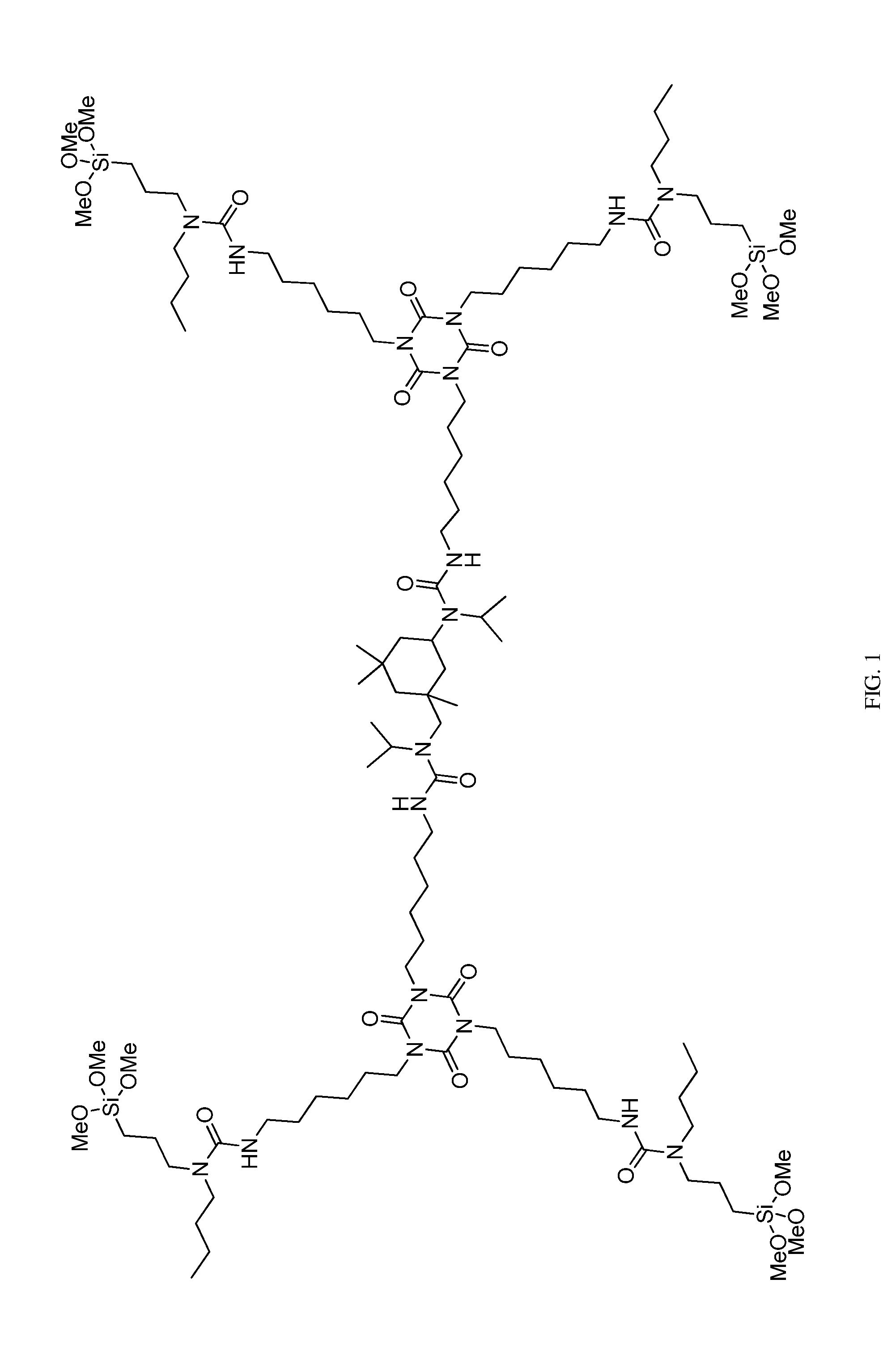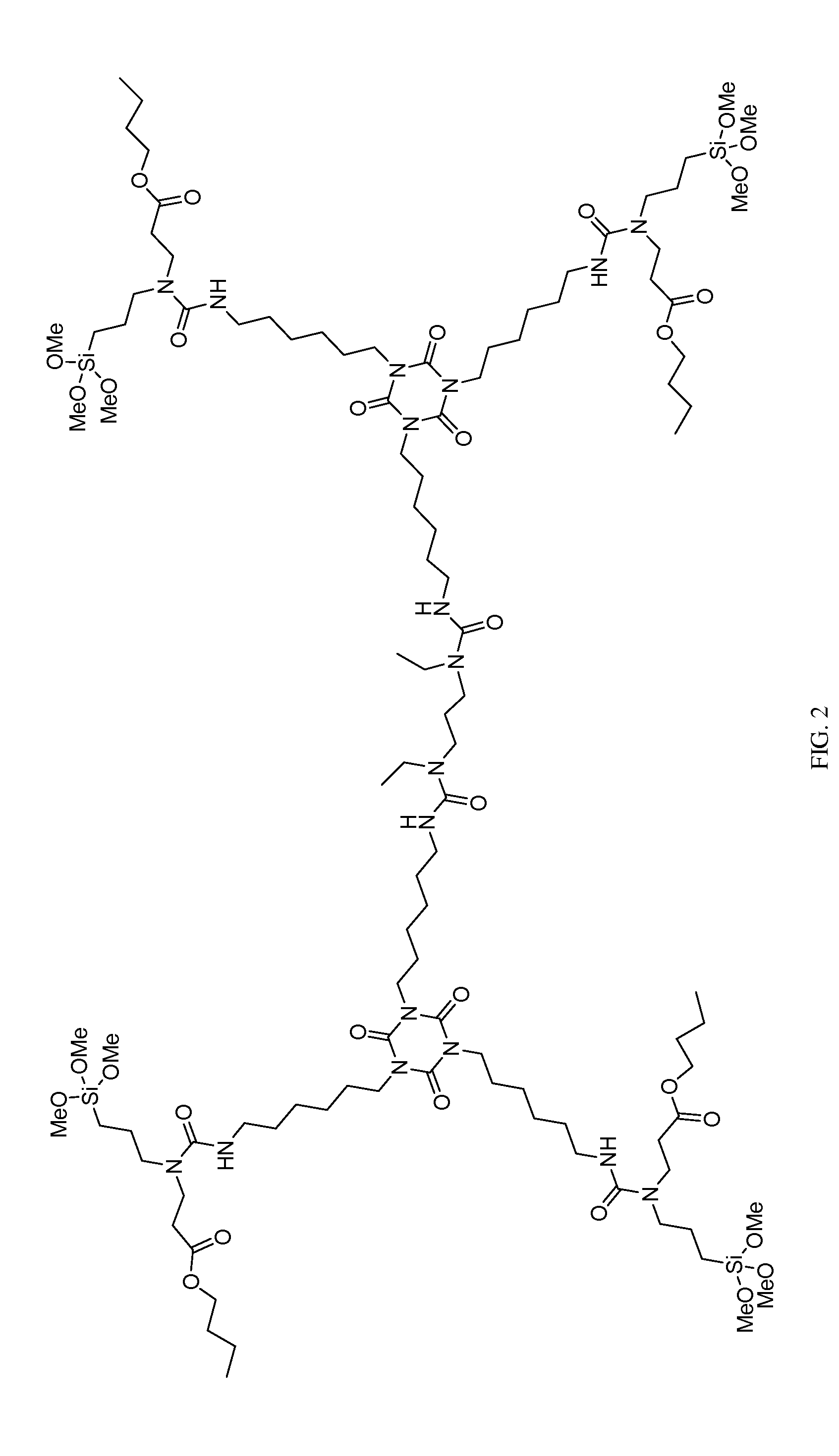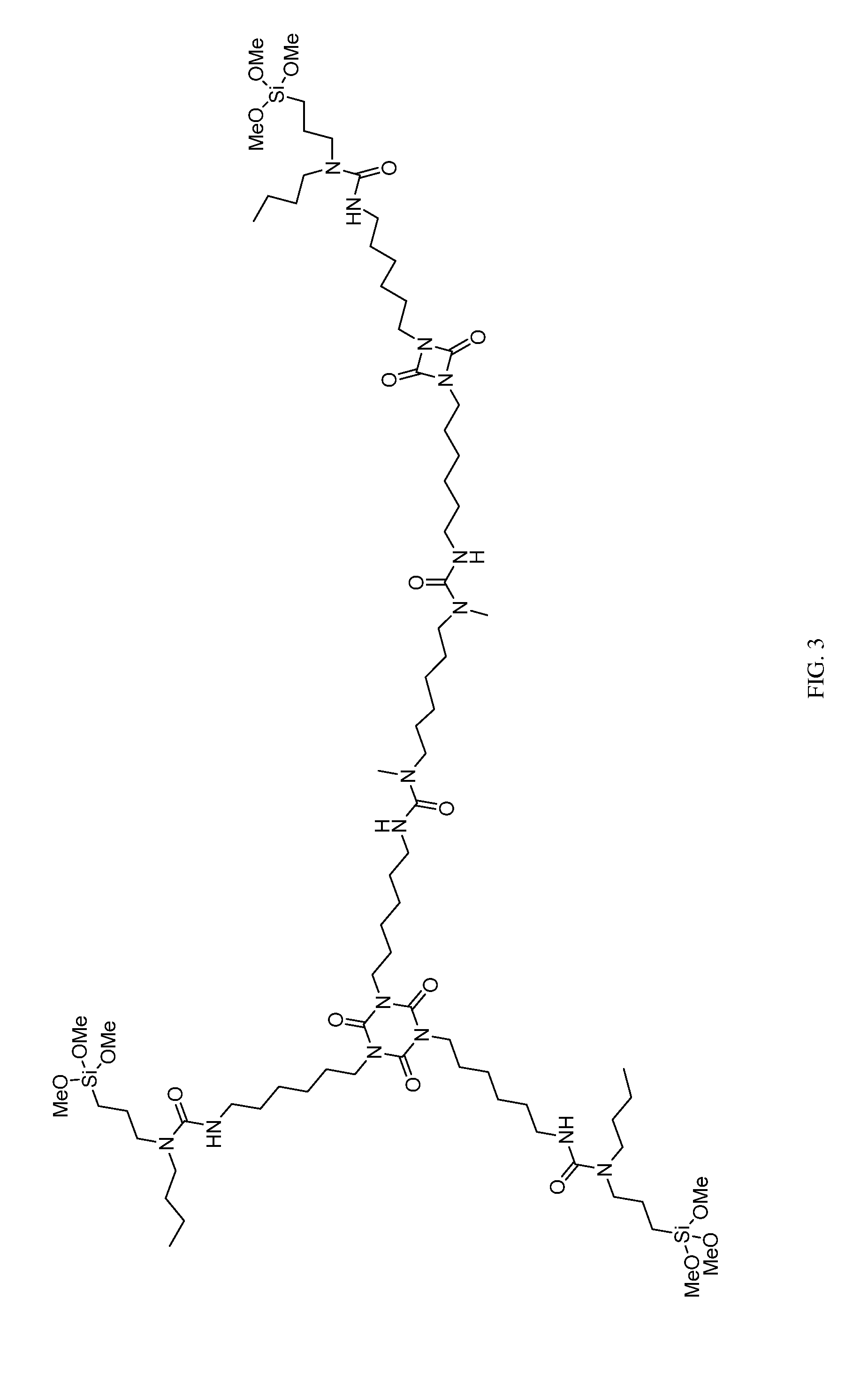Single-component moisture-curable coatings based on n-substituted urea polymers with extended chains and terminal alkoxysilanes
a technology of n-substituted urea and polymer, which is applied in the direction of coatings, polyurea/polyurethane coatings, etc., can solve the problems of increasing the overall molecular weight of the polymer, and achieve fast tack-free and dry-through times, high flexibility, and good adhesion
- Summary
- Abstract
- Description
- Claims
- Application Information
AI Technical Summary
Benefits of technology
Problems solved by technology
Method used
Image
Examples
example 1
[0067]This example describes the preparation of a polymer based on an aliphatic polyisocyanate, N-alkyl amino-functional alkoxysilanes, and a cycloaliphatic secondary diamine chain extender with N-alkyl groups. The structure is shown in FIG. 1.
[0068]81.6 g (0.446 equiv.) of an aliphatic polyisocyanate based on an HDI isocyanurate trimer (commercially available as Desmodur N-3600 from Bayer Material Science) was dissolved in 115 g of Aromatic 100 (commercially available from Exxon) in a 500 ml 3-neck round bottom flask equipped with an Argon inlet and thermometer. This was followed by the addition of 5 g of vinyltrimethoxysilane (commercially available from Aldrich) as a drying agent. Using an addition funnel, 71.38 g (0.303 equiv.) of N-butyl-3-aminopropyltrimethoxysilane (commercially available as SIB 1932.2 from Gelest) was added dropwise to the solution while keeping the temperature at 40-50° C. Next, 18.78 g (0.147 equiv.) of N-isopropyl-3-((isopropylamino)methyl)-3,5,5-trimethy...
example 2
[0069]A semi-gloss single-component coating composition was prepared by mixing 165.01 g of the polymer solution (100 g solid polymer by weight) in Example 1 with 11.65 g titanium dioxide, 2.9 g Shepherd Black 30C940, 1.95 g Shepherd Green 410, 1.0 g Shepherd Yellow 30C119, 20 g ceramic microspheres, 10 g Oxsol 100 and 0.5 g dibutyl tin dilaurate.
[0070]The coating was applied at 3 mils (76.2 microns) wet film thickness to tinplate panels and a laneta card, and was allowed to cure (crosslink) at ambient conditions (77° F. and 50% relative humidity). The coating demonstrated a tack-free time of 1 hour and a dry-hard time of 6 hours. After 14 days of curing at ambient conditions, the coating demonstrated a 60° gloss of 57 GU, a resistance of 100+ double rubs to methyl ethyl ketone (MEK) solvent, and a pendulum hardness of 84 oscillations. The coating also demonstrated high flexibility, and passed a 180 degree bend test and a ¼″ Mandrel Bend test without cracking.
example 3
[0071]A semi-gloss single-component coating composition was prepared by mixing 132.01 g of the polymer solution (80 g solid polymer by weight) in Example 1 with 11.65 g titanium dioxide, 2.9 g Shepherd Black 30C940, 1.95 g Shepherd Green 410, 1.0 g Shepherd Yellow 30C119, 30 g ceramic microspheres, 20 g of a methoxy-functional dimethylpolysiloxane (commercially available as Silres SY231 from Wacker Chemical), 15 g Oxsol 100 and 1.0 g dibutyl tin dilaurate.
[0072]The coating was applied at 3 mils (76.2 microns) wet film thickness to tinplate panels and a laneta card, and was allowed to cure (crosslink) at ambient conditions (77° F. and 50% relative humidity). The coating demonstrated a tack-free time of 1 hour and a dry-hard time of 3 hours. After 14 days of curing at ambient conditions, the coating demonstrated a 60° gloss of 48 GU, a resistance of 100+ double rubs to methyl ethyl ketone (MEK) solvent, and a pendulum hardness of 91 oscillations. The coating also demonstrated high fle...
PUM
 Login to View More
Login to View More Abstract
Description
Claims
Application Information
 Login to View More
Login to View More - R&D
- Intellectual Property
- Life Sciences
- Materials
- Tech Scout
- Unparalleled Data Quality
- Higher Quality Content
- 60% Fewer Hallucinations
Browse by: Latest US Patents, China's latest patents, Technical Efficacy Thesaurus, Application Domain, Technology Topic, Popular Technical Reports.
© 2025 PatSnap. All rights reserved.Legal|Privacy policy|Modern Slavery Act Transparency Statement|Sitemap|About US| Contact US: help@patsnap.com



